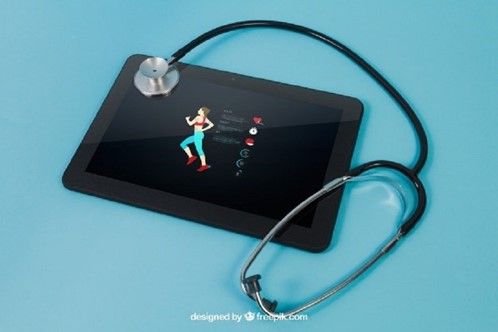With all the uncertainty regarding the sustainability and future of the Health Care System, physicians, private medical practices, and fitness professionals are beginning to see a unique need. The obesity epidemic and the incidence of chronic disease and injury have forced the need for a preventative, medically integrated, and outcome-based model of medical fitness. Most medical professionals and administrators understand the impact healthy eating and exercise can have in the management and prevention of chronic disease, but the integration of these two professions has remained mainly segregated up to this point.
The goal is to combine the science of medicine and the physiology and endocrinology of the body to develop a healthcare model that creates permanent changes, heals degenerative conditions, and restores patient health and vitality. The question is, how?
People with obesity, diabetes, high cholesterol, inflammation, and injury are common. The populations afflicted by these diseases are not only coming to centers with medical supervision, they are already at every fitness club in America, which means trainers need to be able to handle them, too. It’s estimated that in the next 10 years, every healthcare organization will have a facility and program dedicated to the prevention and treatment of lifestyle related disease (Pamela Kufahl, Editor-in-Chief | Club Industry, Jun. 1, 2011).
For years health insurance has been experimenting with medically-supervised weight loss and personal training services because they are science-based amenities that focus on improving one’s quality of life and lowering overall healthcare costs. In 2018, the CMS will release “The Diabetes Prevention Program” (DPP), creating the first opportunity for preventative services such as personal training, health coaching, and wellness services to be covered by insurance.
Centers like Rejuv Medical and John Hopkins Weight Management provide patients with medical assessment and supervision, exercise programming, behavioral and nutritional therapy, and individualized medical services. These are all services the typical personal training client can’t find at a gym. People who seek out or are referred to medically-supervised programs require a more complex approach than the simple training or weight loss ideologies of years past can provide.
Several recent studies archived in the US National Library of Medicine report that “most of the successful obesity programs utilize an interdisciplinary approach that combines a diet, physical activity, parental involvement (for adolescence obesity issues) and behavioral modification.” Public health has increased efforts in recent years to develop medically supervised programs for this population. Founder of the Medical Fitness Network, Lisa Dougherty, has partnered with the medical and certification communities and tasked an advisory board of 15 professional volunteers to develop a standard of continuing education for medical fitness. Being that our waistlines as a country are on the rise and our overall health on the decline, the need for serious physical, emotional, and dietary interventions is also on the rise. But we must change our approach, which is why medically-supervised programs are growing exponentially.
For fitness professionals, there is a profound opportunity to capture a part of the market that is typically terrified to walk into your average gym or studio. The unparalleled unique selling position of a medically integrated facility lends a level of credibility, authority, and trust that will set one apart from almost all competition. Weight loss is a billion-dollar industry. Any product and service that a physician stands behind has a trust factor that is unmatched by any other claim.
Fitness professionals can consider opportunities from three perspectives:
Becoming Employed.
Several hospital systems have wellness centers that lend opportunities for employment. In addition, many physical therapists, chiropractic clinics, and independent practices are looking to add personal trainers as the next step in care for patients and as just one of several potential streams of revenue in a competitive market. One can actively seek out health care professionals who may have interest in adding medical fitness to their practice.
Trainers in these facilities will be asked to absorb the science and interpretation of medical tests that may include: all major biometric markers, metabolic testing, Vo2 Max, HRV (Heart Rate Variability), DPA (Digital Pulse Analyzer), BIA (Bioelectrical Impedance Analyzer), hormonal testing, food sensitivity testing, sleep studies, EKG’s, stress tests, and more. These tools are used to accurately progress, monitor, and treat patients along their journey. Below are a few considerations for fitness professionals who want to become better equipped to handle the growing need for medically-integrated facilities:
- Become familiar with medical terminology alongside prescribing doctors and with physical and/or occupational therapists
- Understand federal statutes such as HIPAA, STARK, and Anti-Kickback laws and regulations
- Commit to continuing education. The Clinical Guidelines on the Identification, Evaluation, and Treatment of Overweight and Obesity in Adults (published by the NIH, NHLBI), Obesity Education Initiative, and Functional Aging Institute are among the certifications that prepare trainers to safely progress patients who are members at medical fitness centers
- Comprehend corrective exercise and safe exercise progression from physical therapy or cardiac rehab to restore a patient’s active daily living skills, quality of life or athletic performance
Partnering with a Physician/Medical Group.
Trends show both medical facilities and fitness professionals are seeking mutually beneficial relationships that foster growth for both sectors. The ability to create one system with the same branded name gives staff and patients a greater degree of interoperability and communication. This allows the greatest growth potential for both the fitness entrepreneur and the medical facility. Start by visiting local medical facilities and network in the community with medical professionals that may share the same vision.
When both partners are invested in the model, you see the maximum number of referrals sent both ways. A major benefit for a fitness center is that medical providers generate a steady referral base from consultations. External marketing of fitness programs has shown an even greater benefit for the growth of a clinic: over 50% of all new fitness patients are integrated after screenings and recommended to visit the medical staff before beginning an exercise program. This is due to risk factors, baseline tracking, health optimization, and evidence-based methodologies that allow programming for better patient outcomes. This is significant because these are new patients to the medical system. This model is both helping medical facilities with profitability, while also servings as a competitive edge and unique differentiator for enhancing community reputation.
Owning One’s Own.
A current fitness facility owner can hire a medical provider at an hourly rate to provide cash-based services. For example, owners can contract a group of medical providers to see their members and have office availability one or more days a week. Creating a non-profit or management contract with physician groups also allows owners to accept payments from medical insurance companies since most states require that independent practices be owned by licensed medical providers. The medical management group bills the patients’ insurance carrier for services rendered, and the owner negotiates a fair percentage for his role in the management arrangement (e.g., generating patients, space, and equipment).
Check with local and state regulations before pursuing this model.
Below are general considerations to keep in mind before opening an integrated medical center:
- Real Estate
- Business and System Plan
- Goal Setting
- Legal Structure
- Purchasing Equipment
- Developing Medical Fitness Operating Systems
- Marketing
There is no crystal ball to tell us how medical facilities and fitness professionals will combine forces. The evidence and trends supporting such integration point to an enormous opportunity for the pioneers and early adopters. There are thousands of practices looking for new cash-based revenue streams and ways to improve patient outcomes. Our culture and future societal needs have been brewing the “Perfect Storm” for those looking to create medically integrated partnerships. The compelling argument for adding medical fitness may be the best and one of the only solutions for fixing the health care crisis. For those looking to learn more about medical fitness integration, please e-mail Jennyh@rejuvmedical.com for a free copy of the best-selling book, The Medical Fitness Impact Plan: How To Reverse Chronic Disease and Body Degeneration While Building Your Bottom Line.
About the author: JR Burgess is the CEO of MedFit and a #1 best-selling author. JR is a husband, father, coach and an international speaker. JR Burgess and Dr. Joel Baumgartner partnered to innovate a healthcare model that prevents, reverses, or better manages chronic pain and disease. Together, their regenerative healthcare model includes non-surgical orthopedics, functional, primary care, and medical fitness.
Medical Fitness has proven to be the difference in their healthcare model and the main driver of successful clinical outcomes. JR and Dr. Baumgartner believe that healthcare without exercise and solid nutrition as the foundation, is not healthcare. They have played an integral role in replicating the proven model in 62 clinics worldwide. Each clinic aims at redefining healthcare, empowering medical leaders and patients to co-create health and impact the world.














